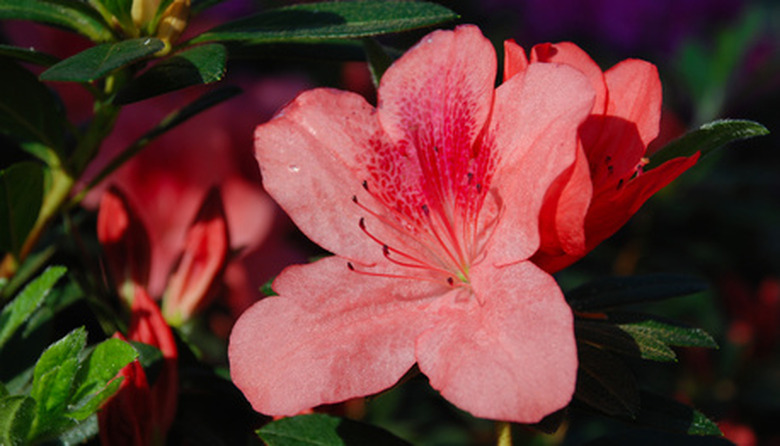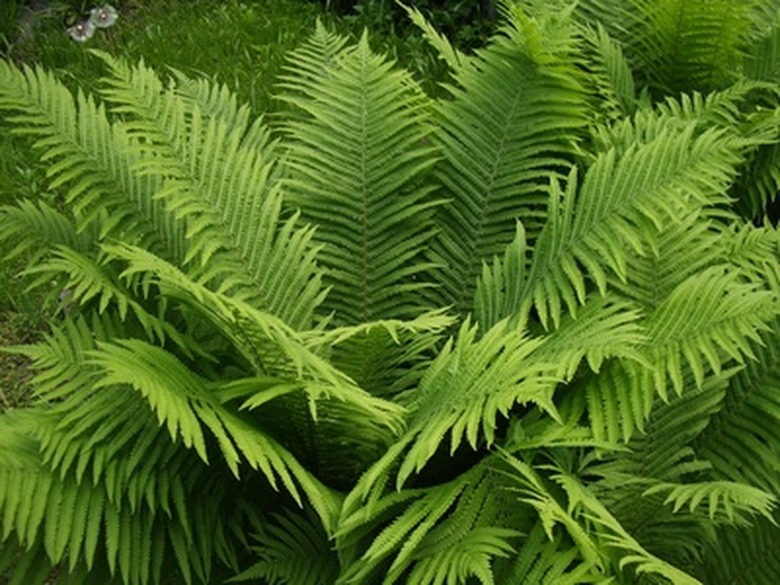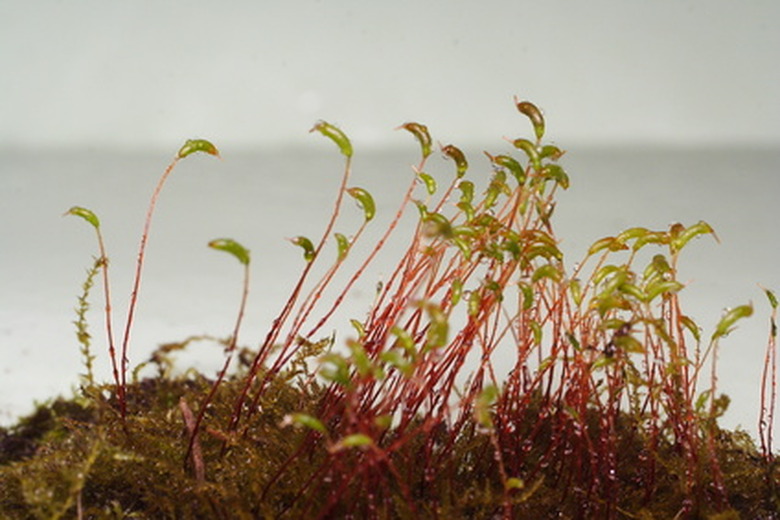Landscape Design Ideas For The Pacific Northwest
Although the Pacific Northwest lies at the same latitude as Duluth, Minnesota and Bangor, Maine, the moderate ocean air keeps its wintertime temperatures fairly mild and its summer temperatures fairly cool. The editors of the "Sunset Western Garden Book" remark that the climate is much the same as southern England, and that like that area, gardeners in the Pacific Northwest have many different landscaping plants to choose from.
Rhododendrons
The Northwest is one of the premier areas in the country for growing rhododendrons and azaleas (which are actually a variety of rhododendron). The Pacific rhododendron is the only native plant, and most gardeners opt for a plant from the huge variety of Asian rhodies or azaleas that both come in many colors, sizes and scents. Most gardeners place rhodies strategically here and there in the garden rather than creating a rhododendron wall or ghetto at the back of their property. Check the potential heights carefully when buying plants, as some varieties are compact or miniature and others can reach up to 25 feet tall.
Eco-Friendly Practices
Using sustainable materials and methods in landscaping is popular in the Northwest. Local gardeners use a lot of stone and other earth-friendly materials, and most people like to choose at least a few native plants that are sure to do well in their landscape. Because summers can be dry, plants that are tolerant of low watering are popular too, such as lavender or vinca. The Washington Nursery & Landscape Association suggests other sustainable practices for northwest gardeners such as rock gardens for dry landscape areas, bamboo for building pergolas and recycled materials like old headboards for climbing plants, or an old iron bathtub for a water feature.
- Although the Pacific Northwest lies at the same latitude as Duluth, Minnesota and Bangor, Maine, the moderate ocean air keeps its wintertime temperatures fairly mild and its summer temperatures fairly cool.
- The Washington Nursery & Landscape Association suggests other sustainable practices for northwest gardeners such as rock gardens for dry landscape areas, bamboo for building pergolas and recycled materials like old headboards for climbing plants, or an old iron bathtub for a water feature.
Native Plants
The sword fern, a Northwest native that grows well in shaded areas, is used extensively in Northwest landscapes for easy care and because it works well placed throughout the landscape. In a shady location with rich soil, sword ferns can reach up to 4 feet high. Another popular landscaping choice is Western bleeding heart, which provides feathery leaves and a dangling flower on stems that can grow up to 18 inches tall. For native shrubs to place in the middle of the landscape, choose either salal, which can get leggy without regular pruning, or redtwig dogwood, which provides bright red stems for winter color.
Consider Removing Your Lawn
Because many Northwest lawns don't get enough summer sun or water to really thrive, and because they are frequently overrun with moss, local homeowners sometimes eliminate a lawn altogether. Noted Northwest garden author Ann Lovejoy wrote in her Kitsap Sun gardening column, "thirsty lawns often endanger the health or trees and shrubs," and that northwest homeowners should consider replacing their lawns with golden water grass and compact rhododendrons to enjoy a natural "Japanesque moss garden."
References
- "Sunset Western Garden Book"; editors of Sunset Magazine and Sunset Books; 1977
- Kitsap Sun: Of Lawns and Moss



